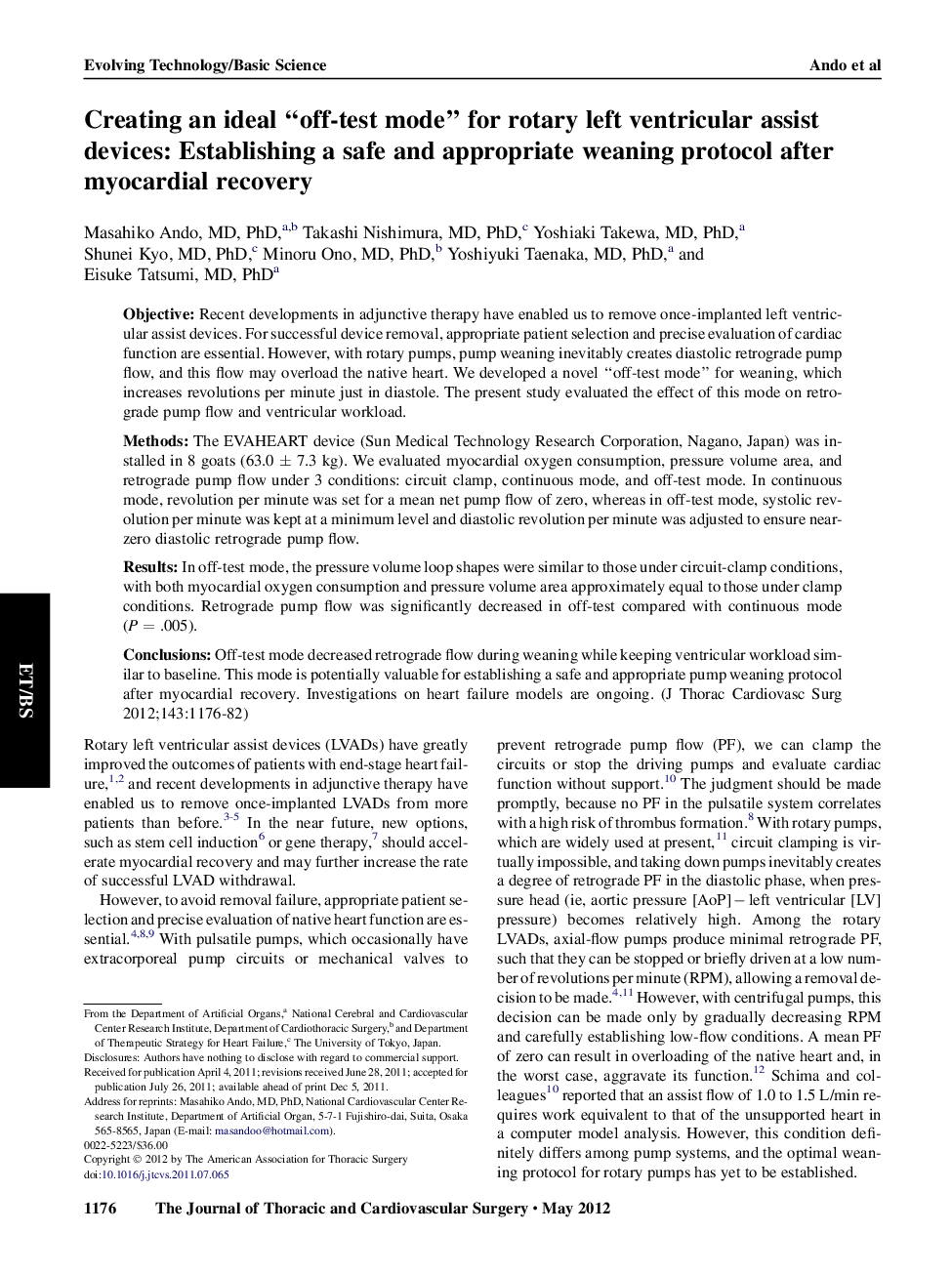| Article ID | Journal | Published Year | Pages | File Type |
|---|---|---|---|---|
| 2982165 | The Journal of Thoracic and Cardiovascular Surgery | 2012 | 7 Pages |
ObjectiveRecent developments in adjunctive therapy have enabled us to remove once-implanted left ventricular assist devices. For successful device removal, appropriate patient selection and precise evaluation of cardiac function are essential. However, with rotary pumps, pump weaning inevitably creates diastolic retrograde pump flow, and this flow may overload the native heart. We developed a novel “off-test mode” for weaning, which increases revolutions per minute just in diastole. The present study evaluated the effect of this mode on retrograde pump flow and ventricular workload.MethodsThe EVAHEART device (Sun Medical Technology Research Corporation, Nagano, Japan) was installed in 8 goats (63.0 ± 7.3 kg). We evaluated myocardial oxygen consumption, pressure volume area, and retrograde pump flow under 3 conditions: circuit clamp, continuous mode, and off-test mode. In continuous mode, revolution per minute was set for a mean net pump flow of zero, whereas in off-test mode, systolic revolution per minute was kept at a minimum level and diastolic revolution per minute was adjusted to ensure near-zero diastolic retrograde pump flow.ResultsIn off-test mode, the pressure volume loop shapes were similar to those under circuit-clamp conditions, with both myocardial oxygen consumption and pressure volume area approximately equal to those under clamp conditions. Retrograde pump flow was significantly decreased in off-test compared with continuous mode (P = .005).ConclusionsOff-test mode decreased retrograde flow during weaning while keeping ventricular workload similar to baseline. This mode is potentially valuable for establishing a safe and appropriate pump weaning protocol after myocardial recovery. Investigations on heart failure models are ongoing.
